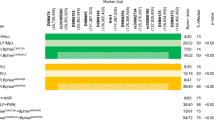Abstract
Bordetella pertussis cells, or extracts from them, increase the sensitivity of mice to histamine, serotonin, toxic materials, various stresses and anaphylaxis. This profound effect, observed to different degrees in various strains of mice, is almost entirely duplicated by adrenal-ectomy1,2. For this reason, it has long been suspected that the mode of action of B. pertussis involves the adrenal glands either directly or indirectly1,2. B. pertussis-treated mice can be protected from histamine death by injection of cortisone or hydrocortisone, but treatment with epinephrine 30 min before histamine challenge was not effective. Consequently, it has been assumed that the steroid hormones were the significant factor in the histamine sensitization phenomenon1,2. In adrenal-ectomized mice, it has been demonstrated that both epinephrine and steroids protect mice from histamine death3. It should be stressed that no evidence has been uncovered to show that the histamine-sensitizing factor (HSF) extracted from B. pertussis cells directly affects the adrenal glands. No histological abnormalities or changes in the amount of steroids produced have been observed2. To account for this lack of direct effect on the adrenal gland, it was proposed that the B. pertussis effect might be due to an indirect effect at a site removed from the adrenal glands, such as blocking the site of action of an important adrenal hormone.
This is a preview of subscription content, access via your institution
Access options
Subscribe to this journal
Receive 51 print issues and online access
$199.00 per year
only $3.90 per issue
Buy this article
- Purchase on Springer Link
- Instant access to full article PDF
Prices may be subject to local taxes which are calculated during checkout
Similar content being viewed by others
References
Kind, L. S., Bacterial. Rev., 22, 173 (1958).
Munoz, J., in Bacterial Endotoxins, edit. by Landy, M., and Braun, W., 460 (Quinn and Boden Co., Rahway, New Jersey, 1964).
Halpern, B. N., Benacerraf, B., and Briot, M., Brit. J. Pharmacol., 7, 287 (1952).
Fishel, C. W., Szentivanyi, A., and Talmage, D. W., J. Immunol., 89, 8 (1962).
Fishel, C. W., Szentivanyi, A., and Talmage, D. W., in Bacterial Endotoxins, edit. by Landy, M., and Braun, W., 474 (Quinn and Boden Co., Rahway, New Jersey, 1964).
Wyman, L. C., Amer. J. Physiol., 87, 29 (1929).
Author information
Authors and Affiliations
Rights and permissions
About this article
Cite this article
BERGMAN, R., MUNOZ, J. Adrenal Medullary Hormones and Sensitization of Mice to Histamine by the Histamine sensitizing Factor of Bordetella pertussis. Nature 205, 910–911 (1965). https://doi.org/10.1038/205910a0
Issue Date:
DOI: https://doi.org/10.1038/205910a0
Comments
By submitting a comment you agree to abide by our Terms and Community Guidelines. If you find something abusive or that does not comply with our terms or guidelines please flag it as inappropriate.



